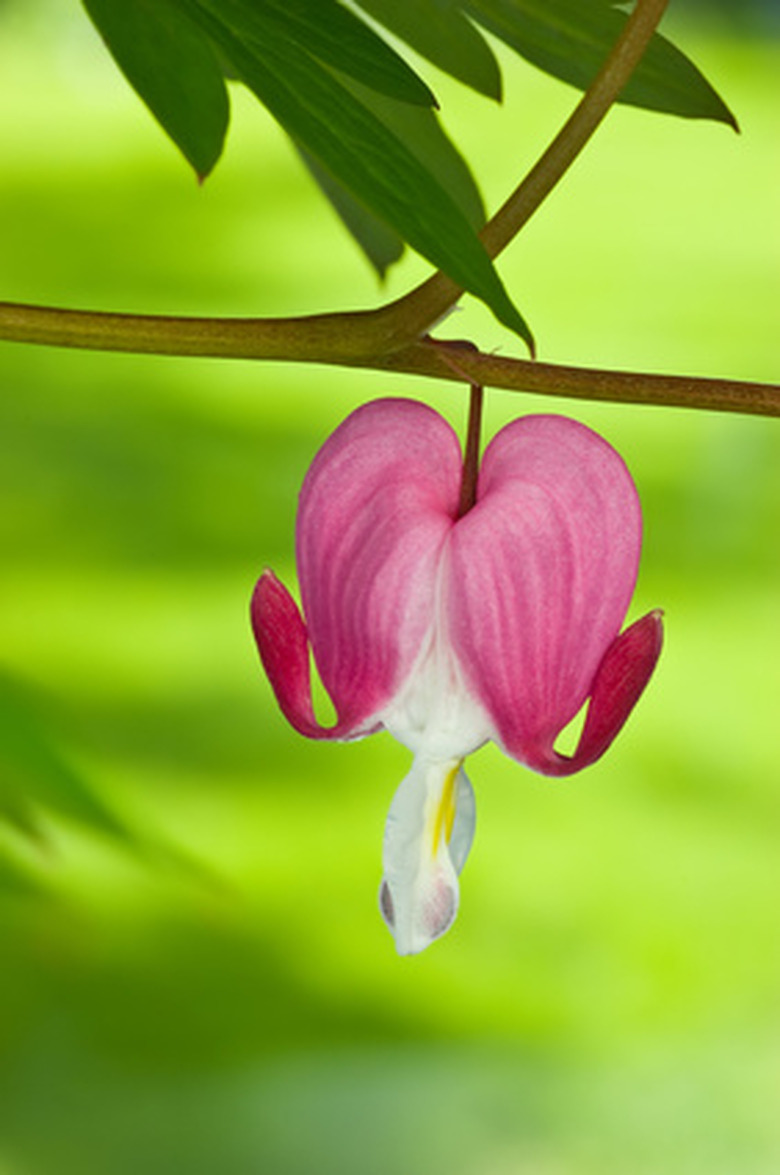How To Grow Bleeding Hearts Indoors
Things Needed
- Large pot
- Potting soil
- Hand shovel
- Support structure
- Flexible ties
Bleeding heart (Dicentra or Clerodendrum thomsoniae) is a shrubby evergreen vine with clusters of heart-shaped crimson flowers surrounded by white petals. These flowers offer a brilliant color and are wonderful outdoor or indoor plants. Best suited to warmer, frost-free zones when planted outdoors, the bleeding heart does well potted and can be moved to an outside location in warmer weather. Bleeding heart grows best in USDA zones 10 and 11 where the soil is loam and clay-based, and the climate is moist and warm.
Step 1
Choose a pot that is large enough to hold the growing plant, as the bleeding heart will grow to 12 feet tall and require space to expand. Select a support system such as a trellis, wire or string to hold the mature vine.
Step 2
Fill pot with soil, leaving a 1 inch of space at the top of the pot. Dig a hole in the center of the pot with a hand shovel large enough to hold the rootball. Place the plant into the hole and cover with soil. Press firmly around the root, making sure that the crown, where the foliage meets the root ball, is no more than 1 inch below the surface. Firmly press the soil around the base of he plant, ensuring the plant is stable in the pot
- Bleeding heart (Dicentra or Clerodendrum thomsoniae) is a shrubby evergreen vine with clusters of heart-shaped crimson flowers surrounded by white petals.
- Press firmly around the root, making sure that the crown, where the foliage meets the root ball, is no more than 1 inch below the surface.
Step 3
Water well. Pour water slowly into the pot until it begins to drain from the bottom. Allow the excess water to drain off. Continue a normal watering pattern for indoor plants, allowing excess water to drain from the pot bottom.
Step 4
Place the pot in a well-lit area inside the home. Turn the pot often to prevent one-sided growing, as the bleeding heart vine will grow toward the sunlight.
Step 5
Apply water-soluble fertilizer once per month according to the package directions. Water the soil until the moisture drains from the bottom of the pot. Allow the soil to dry 1 inch below the surface between waterings.
- Pour water slowly into the pot until it begins to drain from the bottom.
- Water the soil until the moisture drains from the bottom of the pot.
Step 6
Tie plant stems to the support system when they are long enough. Tie loosely to prevent damage to the stem. Continue to tie stems as they grow, reaching the top of the support system.
Tip
For non-support system potting, allow the vine to grow out of a hanging pot and cascade to the ground. Bleeding hearts require partial shade to full sun, so a location near a window will offer plenty of light.
